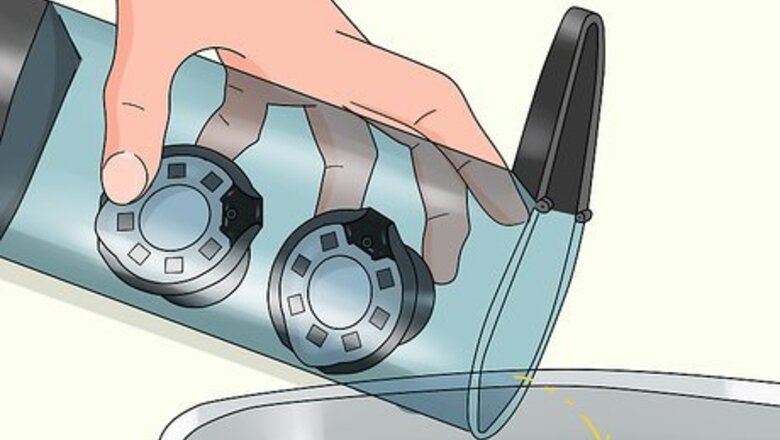
views
Descaling a Nespresso Machine
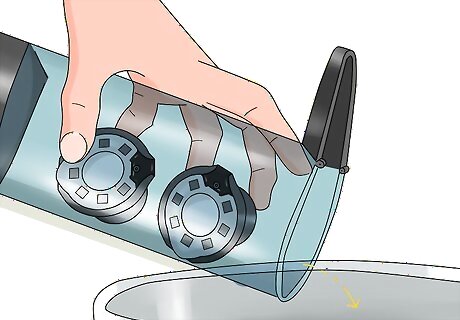
Empty the capsule container and drip tray. Before you start descaling, open the lever on your machine to eject the last capsule. Remove the capsule container and dump all the used capsules into your trash. Then, pour out any liquid left in the drip tray. Replace the components and turn your machine on. The capsule container and drip tray are usually located on the side or back of your Nespresso machine, but check your model’s instruction manual for its exact location.
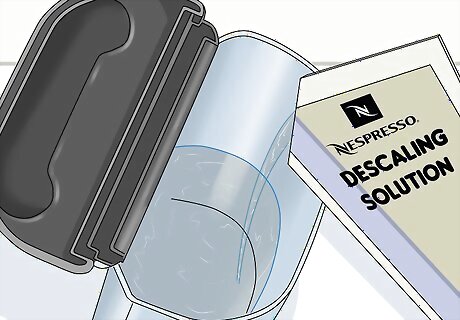
Fill the reservoir with either descaling solution or white vinegar. Nespresso officially recommends their descaling solution, but many people have had success using distilled white vinegar in a pinch. For the homemade solution, fill the reservoir with equal parts water and vinegar. Otherwise, Raymond Chiu, a professional house cleaner, recommends you "Fill the water tank with the suggested ratio of water and descaling product on the packaging, which is about 3 parts water, 1 part descaler. Nespresso officially recommends pouring in a pack of descaling solution and adding about 17 fluid ounces (500 mL) of water. Alternatively, you may make a citric acid solution. Mix 2 tablespoons (22.8 g) of citric acid with about 34 fluid ounces (1,000 mL) of water. Then, add it to your tank. If you have hard water at home, then use distilled water in the reservoir for a more effective cleaning.

Switch your Nespresso machine to descaling mode. Each Nespresso machine has a unique way to enter descaling mode. Typically, you’ll press and hold down specific buttons to start the cycle. Chiu states that the buttons will start blinking after about 3 seconds when you enter the descaling cycle. To clean a Nespresso Vertuo machine, hold the top button down for around 7 seconds. For the Pixie, Inissia, and CitiZ models, press down the 2 flashing buttons and hold them for approximately 3 seconds. For the Prodigio model, press the 3 coffee buttons at the same time and hold them for 6 seconds to enter descaling mode.
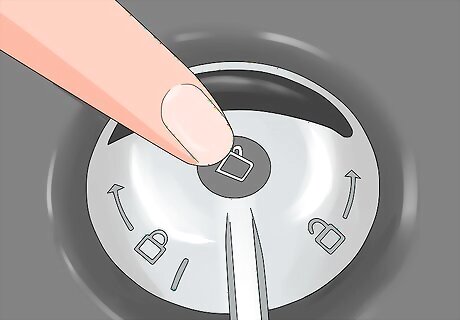
Press the flashing buttons to start cleaning the machine. Place a large mug or container under the machine’s spout, and press any of the blinking coffee buttons to start descaling. As the cycle runs, the solution will move through your Nespresso machine to remove any limescale or calcium buildup inside and empty into the mug. When the solution finishes running through your machine, you may hear it beeping or the buttons will start blinking again. Descaling usually takes around 10–20 minutes. Chiu says that on some models you may need to "press and hold the button to pour out the water tank."

Rinse the reservoir, drip tray, and cup support. Toss the cleaning solution in the mug down your sink drain. Then, remove the water tank, drip tray, and cup support from the machine. Rinse them thoroughly with warm water to get rid of all of the residue from the descaling solution. Pat the components dry with a clean cloth and reassemble your machine. Avoid putting any pieces of your Nespresso machine in your dishwasher because they could get damaged.
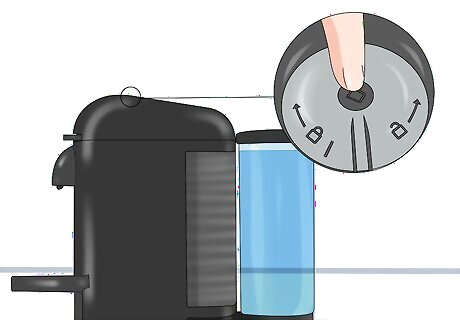
Refill the reservoir with water and run the machine again. Refill the water reservoir with clean water. Place the large mug back under the coffee outlet, and click one of the blinking lights to run the machine once more. As the clean water runs through your machine, it will rinse out any leftover cleaner or residue still trapped inside. When it’s finished, empty the water out from the mug. If you descale your Nespresso machine with vinegar or citric acid, refill the reservoir and run a rinse cycle 1–2 more times to get rid of any residual odors and flavors.

Switch your machine out of descaling mode. Some Nespresso machines, like the Vertuo, switch out of descaling mode automatically. On other models, you may have to press and hold the same buttons you used to turn the cycle on. After that, your machine is ready to brew coffee again. Let the machine dry for at least 10 minutes before using it.
How Often to Descale a Nespresso Machine
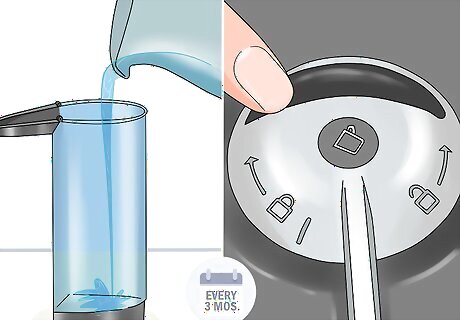
Descale your Nespresso machine every 3 months or after 300 uses. Limescale and calcium deposits build up over time, so run the descale cycle either after 3 months or after using 300 capsules (whichever one comes first). Some models may have a light that blinks as soon as it’s time to descale your machine. If you live in an area with hard water, then you may need to clean your Nespresso every 1 or 2 months. If you’re able to connect your machine to the Nespresso app, it will notify you when it’s time to descale.

Descale the machine once it runs poorly or makes bad-tasting coffee. As residue builds up inside your Nespresso machine, it may affect the performance and flavor of your coffee. If you notice any of the following signs, descale your Nespresso as soon as you have the chance. Your coffee tastes burnt or has an off flavor Your coffee isn’t as warm as it used to be Your Nespresso machine makes a lot of noise during the brew cycle
Routine Cleaning for Nespresso Machines
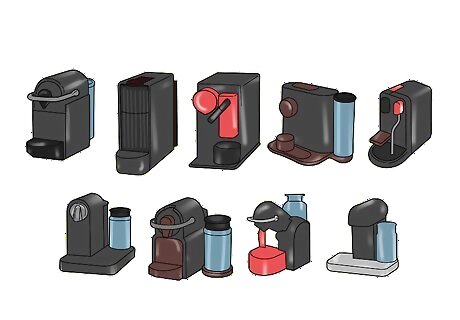
Wipe the drip tray and capsule container with soapy water each day. Pull the drip tray and capsule container out from your Nespresso machine. Wet a lint-free cloth with warm water and dish detergent, and wipe out any debris. If there is any buildup in the drip tray, gently scrub it away. Rinse the drip tray and capsule container with warm water, and let it air dry. Without proper cleaning, your drip tray could quickly grow bacteria and mold.
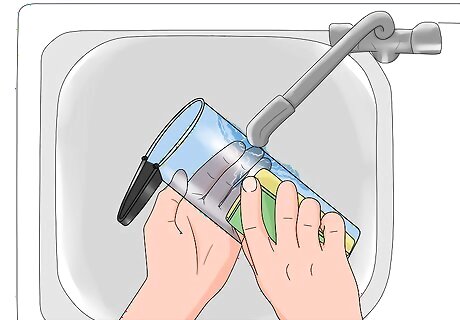
Wash out the water reservoir. Take out the water reservoir from your machine and empty it out into your sink. Wash the reservoir and its lid with mild dish soap, and wipe it down with a lint-free cloth. Rinse the soap out with warm water, making sure to remove all suds. Let the lid and water reservoir air-dry before reattaching them. You can also dry it with a clean lint-free cloth if you want to use your machine right away.

Wipe the capsule detector lens with a dry cloth. The detector lens is located inside the machine, and is easy to access when you remove the drip tray and capsule container. Take a soft, dry cloth and gently wipe any smudges off of the lens. Avoid using any soap or water on the lens so you don’t accidentally damage the machine.

Wipe down the exterior and external parts after each use. Wet a cloth with warm water, and wipe the coffee outlet and outside cover of your Nespresso machine. Be sure to wipe out the cup support and the inside of the capsule holder as well. If your Nespresso model has a steam wand or milk container, empty them out and wipe them down with soapy water.
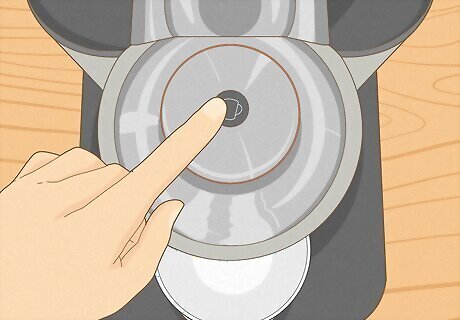
Run the cleaning cycle if your Nespresso has one. Some Nespresso models have special cleaning cycles that run hot water through the machine to rinse them out. Fill the reservoir with clean water, place a mug under the coffee outlet, and follow your machine’s instructions to start the cleaning mode. Cleaning cycles usually only take 5–7 minutes to run. Run the cleaning cycle every 2–3 weeks to help clear out any residue. This also helps keep your Nespresso machine cleaner in between descaling cycles.

Avoid strong chemical cleaners on your Nespresso machine. Chemicals like standard kitchen cleaners and bleach can damage your coffee machine, so steer clear of them when you’re cleaning. Stick to mild dish soap and warm water any time you clean your machine. Never submerge any part of your machine in water or other liquids. Avoid using sponges because they can break apart and leave residue inside your machine.














Comments
0 comment